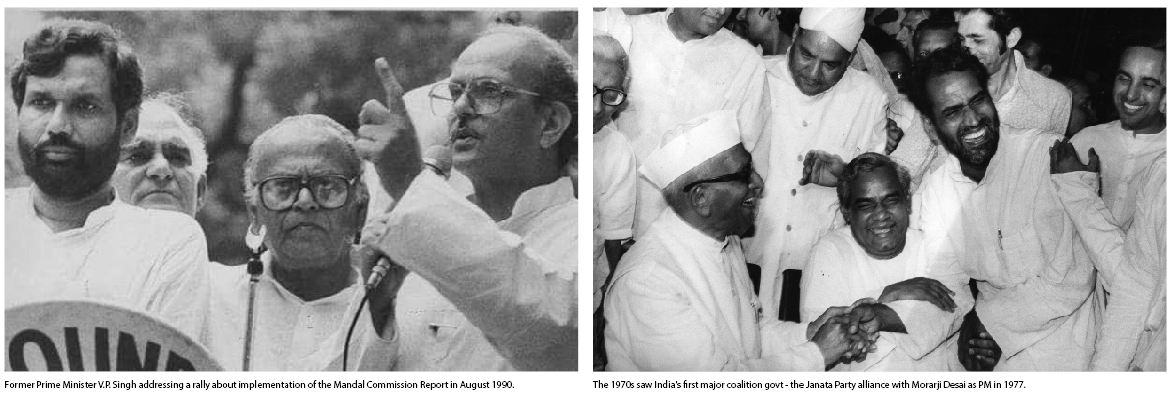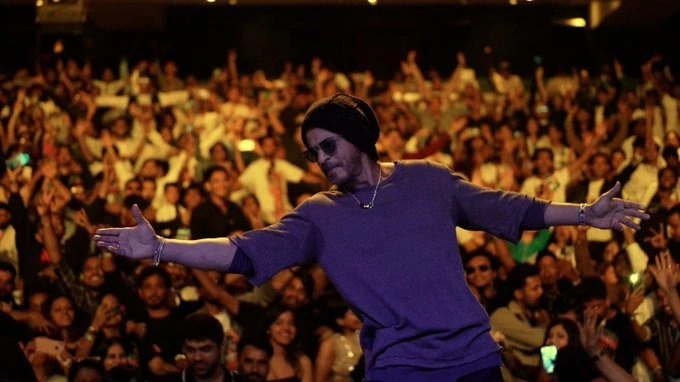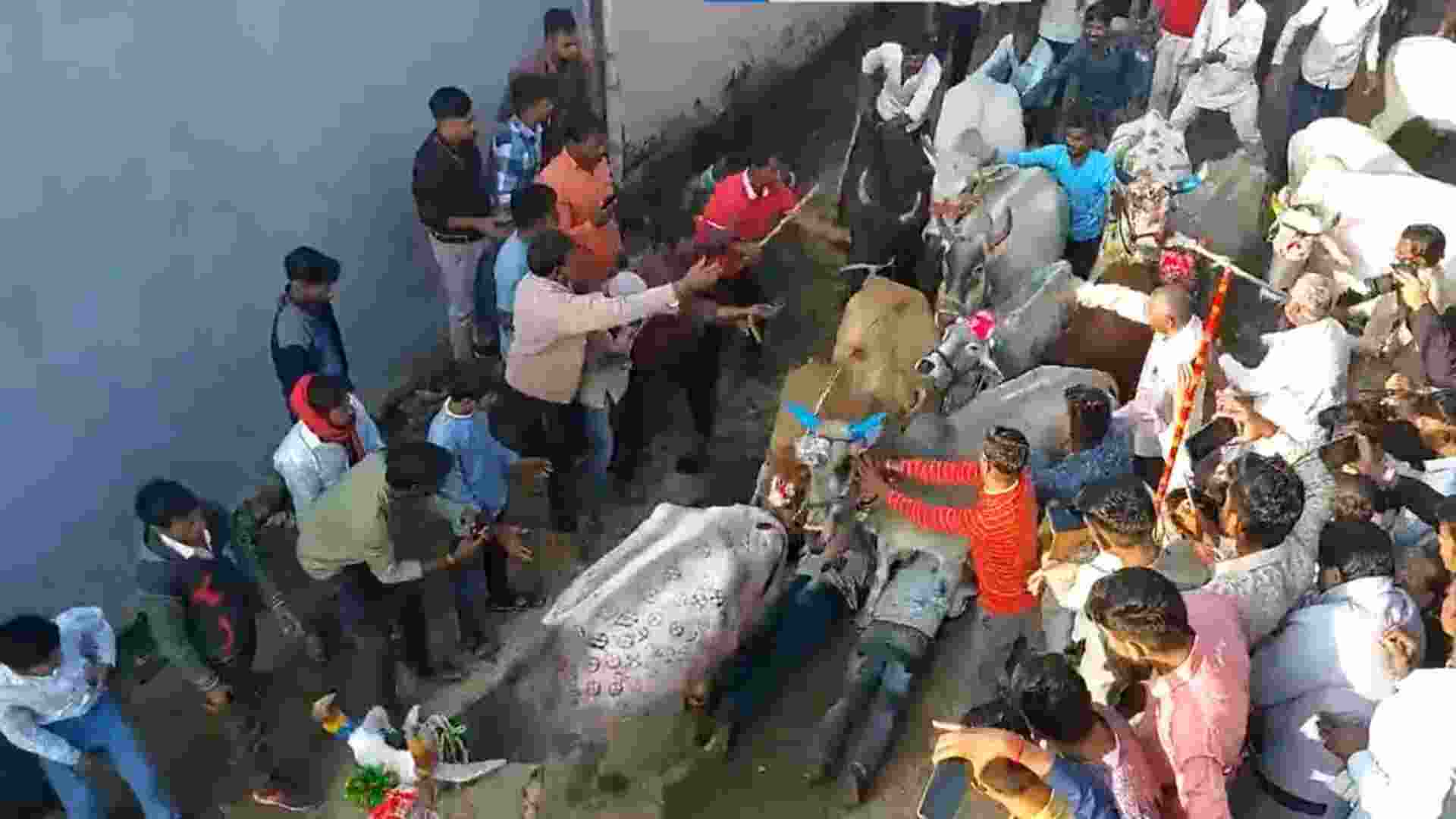
In a surprising result that has sent shockwaves through India’s political landscape, the recent general elections have delivered a divided decision, shattering the hopes of the Bharatiya Janata Party’s (BJP) to secure an outright majority. For the first time in a decade, Prime Minister Narendra Modi’s party has fallen just short of the needed seats in the Lok Sabha, requiring the formation of a coalition government.
This unexpected outcome has put India in unfamiliar territory, marking the beginning of a new era in the nation’s political journey. As the largest party, the BJP now faces a difficult situation, needing to seek the support of its National Democratic Alliance (NDA) allies to stay in power. The idea of “Coalition Dharma,” a term coined by former Prime Minister Atal Bihari Vajpayee, has gained new importance, highlighting the need to consider the interests of coalition partners while holding onto a broader vision for the country.
For Modi, a leader who has never had to depend on external support during his time as Gujarat’s Chief Minister or as the Prime Minister, this change in power dynamics is a significant departure from the past. His real test as a leader will be in his ability to manage this evolving situation, finding a balance between pushing his party’s agenda and respecting the principles of coalition governance.
While coalition governments are not unfamiliar in India’s political history, recent years have been dominated by the BJP’s complete majority in parliament. This new reality reminds us of the country’s diversity and the ongoing need for inclusive, consensus-based governance. As India embraces this new era, past experiences provide valuable lessons for the challenges and opportunities ahead.
A Tapestry of Coalition Experiments: Learning from History
India’s involvement with coalition politics dates back to the late 1970s when the Janata Party, a diverse group of opposition forces, removed Indira Gandhi after her controversial Emergency rule. However, this initial attempt at coalition governance didn’t last long, collapsing due to internal divisions and ideological differences within just two years.
The late 1980s and early 1990s saw a series of coalition experiments, each one moving closer to mastering the art of consensus-driven governance. The National Front alliance, led by V.P. Singh, came to power in 1989 but faced controversy over the implementation of the Mandal Commission report, which reserved government jobs for Other Backward Classes (OBCs). The subsequent withdrawal of support by the BJP over the Ram Janmabhoomi movement ultimately led to the coalition’s downfall in 1990.
The United Front government, formed in 1996 after a hung parliament, managed to maintain economic stability and continue liberalization policies during its brief time in power. However, the withdrawal of Congress support in 1998 showed the fragility of coalitions dependent on external backing.
It wasn’t until the late 1990s that India saw the establishment of a stable and lasting coalition government. The BJP-led National Democratic Alliance (NDA), under the steady leadership of Atal Bihari Vajpayee, secured a full five-year term from 1999 to 2004, bringing in a period of economic reform, infrastructure development, and the landmark Pokhran-II nuclear tests.
The Congress-led United Progressive Alliance (UPA), a diverse coalition of 13 parties, governed for two consecutive terms from 2004 to 2014, with Dr. Manmohan Singh at the helm. This period was a peak in coalition governance, as the UPA adeptly managed a multifaceted alliance while advancing key economic and social reforms, including the landmark Mahatma Gandhi National Rural Employment Guarantee Act (MGNREGA) and the Right to Information Act.
However, the UPA faced challenges during its tenure. Corruption scandals, such as the 2G spectrum scam and the Commonwealth Games controversies, tarnished the government’s reputation, and perceived policy paralysis during its second term contributed to its electoral defeat in 2014.
The Return of Single-Party Dominance and Its Implications
In a significant departure from the coalition era, the 2014 general elections brought about a change, as the BJP gained a rare parliamentary majority on its own, allowing the NDA to form a single-party government under the dynamic leadership of Narendra Modi. This mandate was reaffirmed in 2019, reflecting the electorate’s desire for a strong, decisive administration not bound by the limitations of coalition politics.
Modi’s first term saw a strong focus on economic development, with initiatives such as the Goods and Services Tax (GST), the Make in India campaign, and efforts towards financial inclusion. However, the government also faced challenges, including an economic slowdown and social tensions arising from issues such as the Citizenship Amendment Act (CAA) and the abrogation of Article 370 in Jammu and Kashmir.
As Modi begins his second term, the divided verdict from the electorate has changed the dynamics once again, requiring a return to coalition politics. The ability to form productive alliances and govern through consensus will likely remain essential for any aspiring national leader.
The Road Ahead: Challenges and Opportunities
The road ahead for the BJP-led coalition will undoubtedly be challenging, with obstacles that will test even the most experienced political operators. The need to satisfy alliance partners, each with their own demands and priorities, could potentially hinder the government’s ability to implement its policy agenda with firm conviction.
Additionally, the inherent fragility of coalition arrangements can lead to instability, with the constant threat of defections looming large. Smaller parties, empowered by their newfound kingmaker status, may exert significant influence, extracting concessions that don’t match their parliamentary strength.
Furthermore, the principle of collective responsibility, crucial in parliamentary democracy, often gets compromised in coalition setups. Regional forces, prioritizing local interests over national imperatives, may hold the central executive hostage to their demands, threatening defection if their desires aren’t met. This situation undermines administrative accountability, as coalition partners engage in a blame game, neglecting their shared duty to the electorate.
However, despite these significant challenges, the emergence of coalition politics in India presents a profound opportunity – a chance to redefine governance and reaffirm the nation’s commitment to pluralistic ideals. By embracing consensus-building, the BJP-led coalition can set a course that celebrates India’s diversity while promoting a progressive, development-oriented agenda.
At the heart of this effort must be an acknowledgment that true statesmanship goes beyond party interests. It requires a willingness to listen, accommodate differing perspectives, and find common ground on national issues. Only through such an inclusive approach can the BJP-led alliance hope to earn the trust and support of the electorate, fostering a sense of shared responsibility for the nation’s future.
The success of coalition politics depends on the ability to move beyond narrow self-interest, form productive alliances, and prioritize the greater good of the nation. It requires compromise, respect for regional aspirations, and a commitment to inclusive governance. Lessons from past coalitions, both successful and short-lived, offer valuable guidance for navigating the complexities of power-sharing arrangements.
As India ventures into this unfamiliar terrain, the world will be watching closely to see how the largest democracy manages the intricacies of coalition governance. The outcome of this experiment will have implications beyond India’s borders, serving as a model for nations grappling with diversity and inclusive governance models.
In the grand tapestry of Indian democracy, coalition politics represents a coming together of diverse voices, a delicate balancing act of ideological partners united by a shared commitment to democratic principles. It is a process that requires adaptability, a willingness to adjust, and a steadfast dedication to progress and unity.
As the nation approaches the realization of its vibrant democracy’s true potential, the art of coalition-building may emerge as a defining characteristic of India’s political journey, a testament to its resilience and its dedication to inclusive governance. The path ahead may be challenging, but the rewards of successful coalition politics – a more inclusive, prosperous, and united India – are worth the effort.
One cannot help but be intrigued by the prospect of witnessing history unfold. As the world’s largest democracy navigates this pivotal moment, the lessons learned and the precedents set will undoubtedly shape the trajectory of nations worldwide. In this crucible of coalition politics, India has the opportunity to emerge as a beacon of hope, demonstrating how diversity can be a strength and how consensus-building can lead to sustainable progress.
The journey ahead may be daunting, but the unwavering spirit of India’s people – their resilience, their commitment to democratic values, and their embrace of diversity – will light the way. As the nation embarks on this new chapter, let us bear witness to the unfolding of a story that will inspire generations to come, a testament to the enduring power of unity in diversity.
In summary, India stands at a pivotal crossroads, embracing a new era of coalition politics. While challenges lie ahead, there is immense potential for consensus-building and inclusive governance. By learning from past experiences and embracing diversity, India can pave the way for a brighter, more united future.















